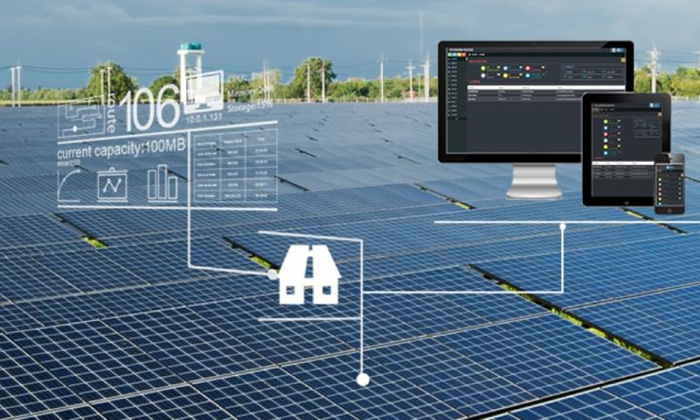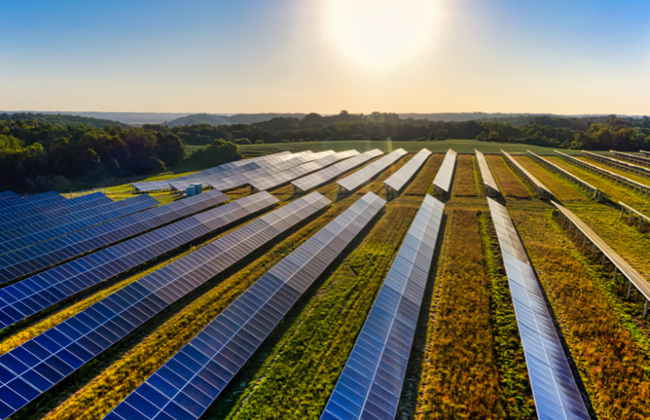54 MW Solar Project in New York
Nautilus, a New Jersey-based independent solar energy producer, on behalf of its affiliate Nautilus U.S. Power Holdco, announced the acquisition of 54 megawatts of solar projects from Seaboard, a developer of utility-scale solar projects. The portfolio includes nine community solar projects in New York and is expected to reach commercial operation in the fourth quarter of 2023.
Sonnedix, a global independent solar power producer, has acquired a 26 MW portfolio of operational solar projects in Spain. The portfolio includes three projects with a total of 11 solar PV sub-projects located in different regions of Spain, including Aragon, Castilla, León, Castilla la Macha, and Murcia.
Revolve Renewable Power Corporation, a developer of utility-scale solar, wind, and battery storage projects, announced the sale of its 1,250 MW of solar plus storage projects to ENGIE IR Holdings, a wholly owned subsidiary of ENGIE, following the signing of a share purchase agreement. The sale includes the Parker Solar and Storage Project with a capacity of 250 MW and the Bouse Solar and Storage Project with a capacity of 1,000 MW.

Renewable energy company Enfinity Global acquired a 400 MW operating utility-scale solar portfolio to expand the company’s presence in the United States.
Norwegian sovereign wealth fund Norges Bank Investment Management has signed an agreement to acquire a 49 percent stake in Iberdrola’s upcoming renewable energy portfolio, which includes nearly 1.3 GW of solar and onshore wind projects in Spain. The Norwegian bank will pay 600 million euros ($649 million) for the stake, which values the portfolio at about 1.2 billion euros ($1.3 billion). The transaction is expected to close in the first quarter of 2023.
Renewable energy developer Econergy Renewable Energy has entered into a €150 million (about $157.7 million) loan agreement with Phoenix Insurance to support its solar photovoltaic projects in Romania and Poland. The loan, which was initially agreed upon between the two parties in February 2022, will be disbursed primarily in the form of a convertible loan (approximately €110 million (approximately $119 million), with an additional €40 million (approximately $4,327), as a fixed loan, two-thirds of which, or €100 million (approximately $108 million), is for its Romanian pipeline.
Solar Power System Components and The Factors That Influence Them
1. What is a solar power system?
A solar power system consists of a solar cell bank, a solar controller, and a battery (bank). If you want the solar power system to output power to 220V AC or 110V, you also need to configure an inverter.
2. Solar power system classification.
Solar power generation system is divided into off-grid power generation system, grid-connected power generation system, and distributed power generation system.
2.1 Off-grid power generation system mainly consists of a solar cell module, controller, and battery, if the output power is 220V AC or 110V, an inverter is also required.
2.2. Grid-connected power generation system is the direct current generated by solar modules converted by grid-connected inverters into alternating current that meets the requirements of the utility grid and then directly connected to the public grid.
Grid-connected power generation systems are centralized large-scale grid-connected power stations that are generally national, the main feature of which is that the generated energy is directly transmitted to the grid, and the grid is deployed to supply power to users. However, this kind of power station has a large investment, a long construction period, and large floor space, and has not been too much development.
The decentralized small grid-connected power generation system, especially the integrated photovoltaic building power generation system, is the mainstream of grid-connected power generation due to the advantages of small investment, fast construction, small footprint, and strong policy support.
2.3. Distributed power generation system, also known as decentralized power generation or distributed energy supply, refers to the configuration of a smaller PV power supply system at or near the user site to meet the needs of specific users, support the economic operation of the existing distribution network, or meet the requirements of both.
The basic equipment of distributed photovoltaic power generation system includes photovoltaic modules, photovoltaic square brackets, DC sink boxes, DC distribution cabinets, grid-connected inverters, AC distribution cabinets, and other equipment, in addition to power supply system monitoring devices and environmental monitoring devices.
Its operation mode is that under the condition of solar radiation, the solar cell array of the PV power generation system converts the solar energy output into electrical energy. Through the DC sink box, it is centrally sent to the DC distribution cabinet, and the grid-connected inverter is inverted into AC power to supply the building’s load, and the excess or insufficient power is regulated by connecting to the grid.

3. Solar power system components
3.1.PV panels (solar panels, photovoltaic panels, solar photovoltaic modules), absorb light energy and convert light energy into electricity. Among them, the monocrystalline silicon conversion efficiency of 14 ~ 20%, the polycrystalline frog conversion efficiency of about 13%, and the amorphous frog is 8 ~ 10%.
3.2. Electricity storage equipment, the current off-grid power generation system’s electricity storage equipment is mainly maintenance-free batteries, which can reserve the electricity generated by PV panels.
3.3. Charge and output control controller: The role of the controller is to control the whole system to work stably and safely.
3.4. Solar PV cables: Most of the DC cables in solar power plants are arranged outdoors, and the environment in which the scenes are used is very harsh. And the cable materials are selected according to the degree of UV, ozone, drastic temperature changes, and chemical corrosion such as acid and alkali in the environment.
If ordinary cables are used, working for a long time in a harsh environment will lead to the breakage of the cable sheath and even to the decomposition of the cable insulation layer, resulting in a short circuit and a fire accident.
Therefore, the use of photovoltaic cables in solar power stations is necessary, photovoltaic cables and ordinary cables are different after the steps of radiation, radiation significantly improved the thermal properties, mechanical properties, and chemical properties of the cable insulation material. It can withstand more ultraviolet radiation, severe temperature differences, and chemical corrosion.
3.5. Other mechanical equipment
4. Solar power system main cost components and factors affecting
4.1. PV board: The solar industry is currently in full swing, and one of the main reasons is the high price of the PV board, affecting the price of the PV board for the entire system. In addition, to control the PV board unit price, it is more important to control the number of PV panels used, the following factors affect.
A. Power generation. B. The weather condition of the PV board location. C. The different latitude of PV board location produces different power. D. The influence of PV board using environment.
4.2. Energy storage equipment: a power generation system to the user how much electricity a day, which determines the capacity of energy storage equipment, power generation system supplies users with more electricity every day, the larger the capacity of energy storage equipment requirements, the higher the cost.
5. Solar customers need to provide information
Class A, (1) system output more power. (2) The user’s daily electricity consumption, the power of power-using equipment, and the length of use of each power-using equipment. (3) The user’s local weather and climate conditions (country, region).
Class B, (1) All the user’s power equipment and the length of time each power equipment is used. (2) User’s local weather and climate conditions. Note: The system is generally designed to generate electricity for one day under sufficient sunlight, without considering rainy days, so the system will only be able to withstand the use of electrical equipment for one day, and the customer has other requirements to be considered separately.
